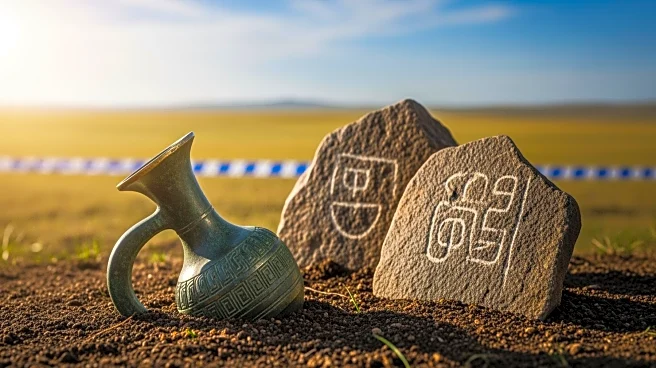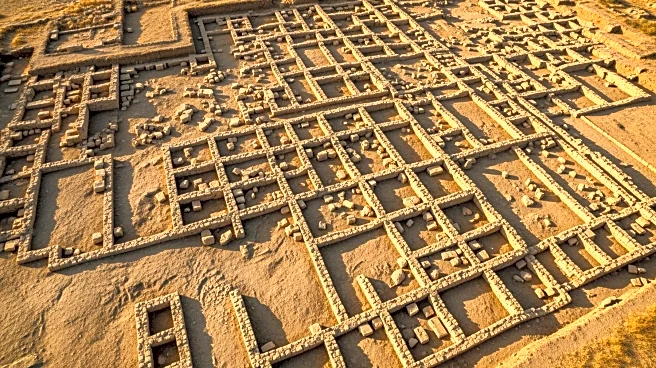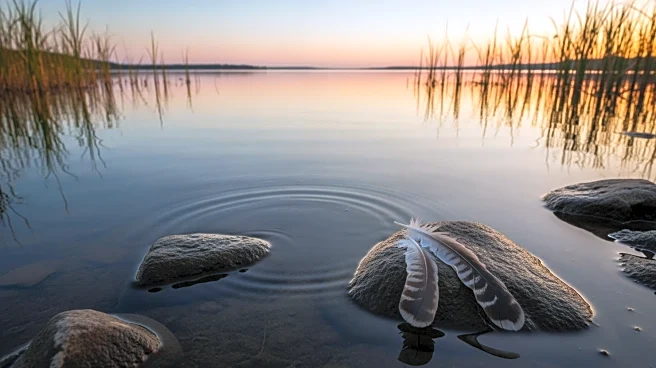What's Happening?
A large settlement dating back 3,600 years has been discovered in the plains of northeastern Kazakhstan, transforming the understanding of prehistoric Eurasian life. The site, known as Semiyarka, features
houses, a central building, and an industrial zone for producing copper and bronze. The settlement's location near the Irtysh River and major copper and tin deposits suggests it was a production hub and a center of exchange and regional power. The discovery challenges previous assumptions about the nomadic nature of steppe societies, revealing a complex and organized community capable of large-scale metal production.
Why It's Important?
The discovery of Semiyarka provides new insights into the social organization and technological capabilities of Bronze Age steppe societies. It highlights the region's role in the broader metal networks of Eurasia, suggesting that these communities were more advanced and interconnected than previously thought. This finding reshapes the historical narrative of Central Asia, emphasizing the importance of the region in the development of early civilizations. The site's industrial capabilities indicate a level of social complexity and economic activity that parallels other ancient civilizations.
What's Next?
Further excavations and studies are planned to uncover more details about the organization and operation of Semiyarka. Researchers aim to understand the extent of its trade networks and the environmental impact of its industrial activities. The findings could lead to a reevaluation of the role of steppe societies in the history of Eurasia and provide a deeper understanding of the development of early urban centers. The ongoing research will continue to explore the cultural and economic significance of Semiyarka in the context of ancient civilizations.












